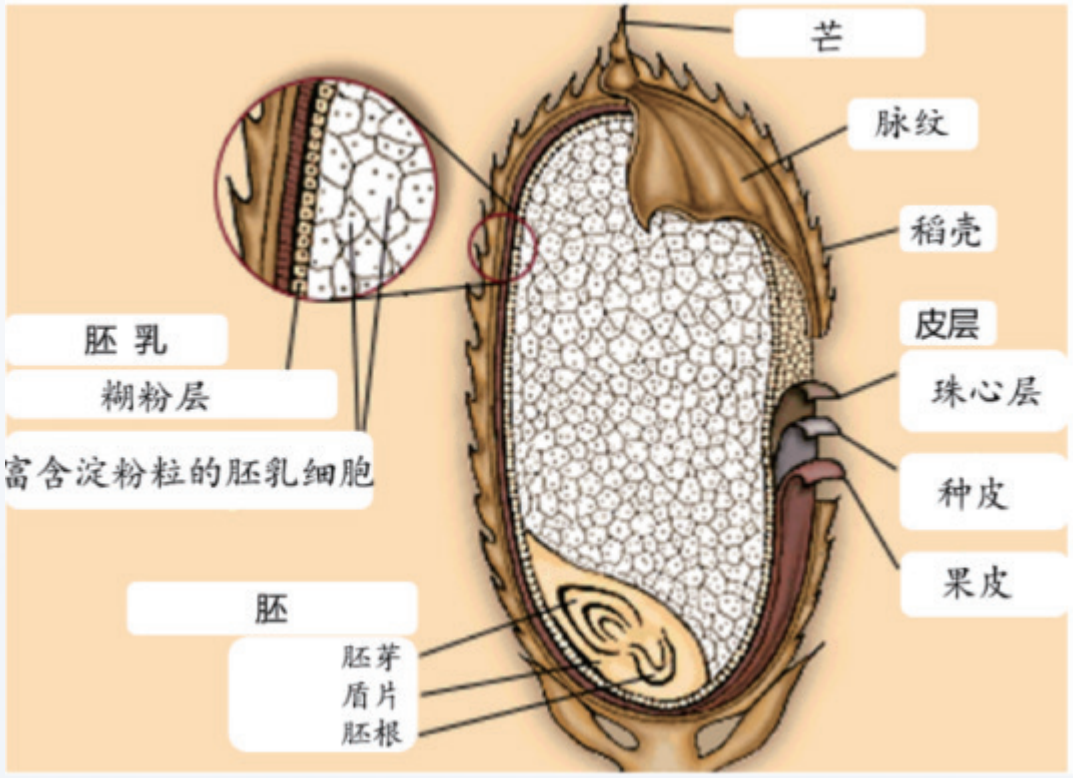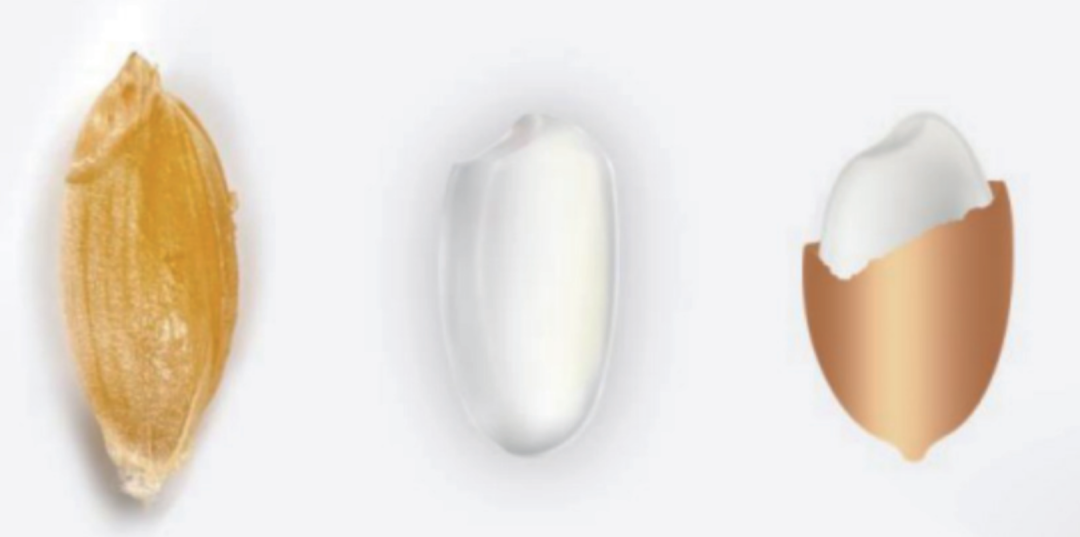Blog
Food savings and losses | Where does the loss of rice processing often occur?
2023-11-23 11:50
How is rice processed?
Rice grain consists of husk, cortex, embryo and endosperm. The main processes of rice processing are cleaning, husking and milling. Rice cleaning is to remove impurities such as sand, metal, weed seeds, etc. Husking is the process of stripping the shell of rice to make it brown rice, and rice milling is to remove the bran layer of brown rice to produce rice with better edible quality.

The average rice production rate of rice processing in China is about 65.5 per cent, of which the average is 63.3 per cent for indica rice and 66.7 per cent for japonica rice in the northeast.
Where does the loss of rice processing often occur?
The loss of rice processing is mainly the broken rice and rice bran produced. Rice processing removes 16% ~ 20% of the rice husk and 5% ~ 7% of the brown rice cortex, respectively. The embryo and aleurone layer contain nearly 64% of the rice nutrition and more than 90% of the micronutrients needed by the human body. The higher the accuracy of rice processing, the more serious the loss of nutrients. The calcium, iron, nicotinoid, vitamin B and vitamin E in brown rice are 1.7 times, 2.7 times, 3.2 times, 10 times and 14 times that of white rice respectively.
Applying moderate processing production technology, the rice yield can be increased by 3% ~ 5%. According to the processing capacity of 0.212 billion tons of edible rice in 2021, the rice yield can be increased by 6.4 million ~ 10 million tons. Based on the yield of 470kg per mu, it is equivalent to an increase of about 13 million ~ 22 million mu of arable land.

To develop moderate processing technology of rice, for consumers to eat nutritious rice and keep nutrients in three meals a day, it is convenient and economical to ensure health; for processing enterprises, moderate processing can improve rice production rate, reduce production energy consumption and improve economic benefits.
Moderate processing technology is undoubtedly the concrete embodiment of the strategy of "storing grain in technology", which helps to develop intangible grain fields, ensure food security, and promote the development of China's large health industry.
Related news
Panjin City implements the decision-making and deployment of the Party Central Committee and the work arrangements of the Provincial Party Committee, implements the three-year action requirements for the comprehensive revitalization of Liaoning, and adheres to the priority development of agriculture and rural areas on the basis of firmly adhering to the red line of arable land. "Technology" strategy, focus on building a key chain of Panjin rice national agricultural industry chain; continue to carry out the construction of beautiful villages throughout the region, and continuously improve the level of rural social governance, the rural production and living environment and the per capita disposable income of residents continue to take the lead, and strive to promote rural revitalization in the forefront of the province and even the country.
The development of rice oil industry has far-reaching significance and great value (below)
How to activate the potential of high-quality development of rice oil in China? What is the significance of high-quality development of rice oil?
The development of rice oil industry has far-reaching significance and great value (above)
Reason for onlookers: Rice bran (including rice embryo) is a by-product of rice processing. Rice bran is not only rich in fat, but also rich in a variety of nutrients. It is a high-quality oil resource. Generally speaking, the oil content of rice bran is 18% ~ 20%, which is equivalent to the oil content of soybean in our country. If 70% of rice bran resources in rice processing in our country can be used for oil extraction and the oil yield is calculated at 15% ~ 16%, then our country can produce about 1.5 million tons of rice oil every year. According to the current annual consumption of edible oil in China, the self-sufficiency rate can be increased by 3.5, which is equivalent to the oil production of more than 900 million tons of domestic soybeans, so it is an extremely valuable oil resource. So, what bottlenecks need to be broken through for the green and high-quality development of the rice oil industry? Recently, Wang Ruiyuan, honorary president of the Oil Industry Branch of the China Agricultural Industrialization Leading Enterprises Association, chief expert of decision-making consulting of the China Association for Science and Technology, and former president of Zhonggu Grain and Oil Group, explained this.
Food savings and losses | Where does the loss of rice processing often occur?
Rice grain consists of husk, cortex, embryo and endosperm. The main processes of rice processing are cleaning, husking and milling. Rice cleaning is to remove impurities such as sand, metal, weed seeds, etc. Husking is the process of stripping the shell of rice to make it brown rice, and rice milling is to remove the bran layer of brown rice to produce rice with better edible quality.
Nutritional value of rice bran
The composition of unsaturated fatty acids in rice bran oil is reasonable, in which linoleic acid is 38% and oleic acid is 42%, the ratio is about 1:1.1, which is in line with the best ratio recommend by the International Health Organization. Linoleic acid is one of the essential fatty acids in the human body, which cannot be synthesized by the human body itself and is indispensable. It has a variety of physiological functions to the human body, especially to participate in the synthesis of phospholipids and as an important component of mitochondria and cell membrane in the form of phospholipids, to promote the metabolism of cholesterol and lipids, to reduce cholesterol and prevent atherosclerosis, but also to synthesize prostaglandin precursors, and prostaglandin has the expansion and contraction of blood vessels, nerve stimulation of conduction and protect the skin from damage caused by radiation.
[Heavy] Northeast Survey of Rice Oil Industry
General Secretary Xi Jinping attaches great importance to the issue of food security and emphasized that "it is necessary to ensure the safety of food and important agricultural and sideline foods".

